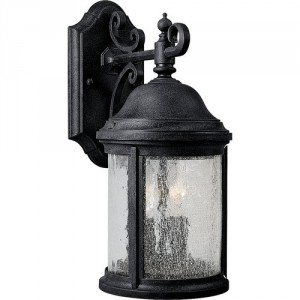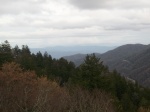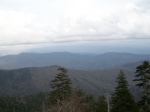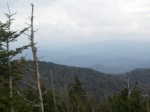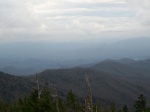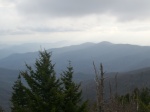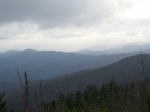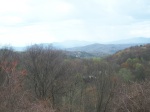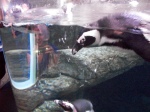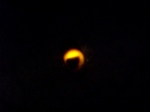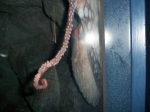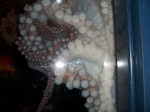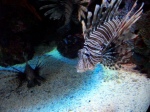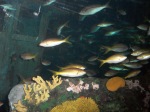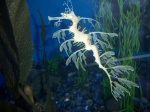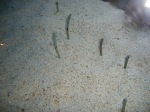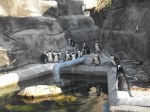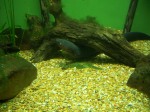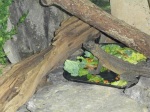We live in a world of interconnectedness; the human-induced threats sea turtles and other species contend with—fishery impacts, coastal development, poaching, pollution, and global warming—are forces we all influence and all have the power to change.
Never, not once, have I ever hear a negative thing about a turtle. Except if someone has a pond and the turtles are eating all the fish which is sad, but as sad as no turtles ever? I don’t think so. Even if you did think that, sea turtles are not the same as red eared sliders or the other various pond fish eating turtles.
So what can we do to help our non-fishy friends?
Minimize Fishery Impacts
Online resources such as Seafood Watch and the Marine Stewardship Council provide you with all the information you need to select the best catch of the day, whether at home or out on the town. Follow sustainable seafood guidelines and use your purchasing power to help improve this key industry.
Spread the Word
Partner with local community groups, schools, and businesses to teach the rest of your community about eating sustainably caught seafood in your area. Post guidelines, host information sessions, and get more people involved.
Encourage Further Action
Find out more about fishery regulations in your area and let your government know that you support a better regulated fishing industry that protects the marine environment.
Begin a dialogue about seafood products with your favorite restaurants and super markets. Tell them it’s important to you that they offer customers sustainable seafood choices.
Decrease Direct Take
Around the world, sea turtles are harvested both for sustenance and for profit. As conservation organizations help communities find alternative food-sources to sea turtles, all of us can help eradicate the consumer market for sea turtle products.
Just Say No
When it comes to food, expose the myth: sea turtle eggs, meat, oils, and fat do not possess any special medicinal properties. They may, however, contain dangerous levels of toxins such as cadmium and mercury.
When it comes to fashion, remember that no sea turtle products are safe to buy, even if marketed as antiques. Every tortoiseshell or turtle leather trinket bought, contributes to the continued poaching of sea turtles.
Protect Coastlines
Coastlines are special places that we share with many species, including sea turtles. By making better choices about how we use these areas, we can help ensure that they remain vibrant and healthy for generations to come. Also, if you live on the beach, you can help ensure their safety by picking up litter and recycling so there is less trash for them to confuse as food or get trapped in.
Support Turtle Friendly Tourism
When planning your next beach vacation, choose to stay at a hotel or resort that is working to protect its surrounding environment. If traveling to a sea turtle nesting area, confirm that the establishment has taken the steps necessary to ensure the safety of nesting females, nests, and hatchlings. Do they turn lights off in the evening? Instruct guests on proper observation behavior? Support or partner with a beach monitoring program? If not, tell them to; if so, let them know how much you appreciate it.
Reduce Pollution
Pollution affects sea turtles in many ways, both directly and indirectly. Take stock of the goods that you use and decide what you can substitute for more environmentally friendly products, and what you can do without altogether.
Follow the Three R’s
Reduce, Reuse, and Recycle remain the consummate pollution-mitigating rules to live by. The less you consume single-use products and the more effectively you use items you already have, the better. Switch from disposable plastic bags to reusable cloth bags and from disposable plastic bottles to reusable metal or plastic bottles.
Get the Whole Picture
When at the store consider supporting companies that are committed to the best environmental practices throughout their production chain and who plan for what happens to their products when you’re finished with them. Where does the company get its raw materials? What do they do with production waste? Can individual components of the products be recycled after use?
Make a Clean Sweep
Even if you don’t live near the ocean, your waste can be carried there in rivers or on the wind, causing damage to sea turtles and other marine life. Don’t let it get that far! Join the annual International Coastal Cleanup or bring your community together independently to collect trash along the shores of a local waterway, park, or street.
Slow Climate Change
Although we may not yet fully understand the far-reaching effects of climate change, we understand enough to know that addressing it is among the most pressing challenges of our time. Sea turtle habitats such as nesting beaches and coral reefs have already been affected by rising sea levels and temperatures, but we can help avoid further damage by acting to mitigate climate change now.
Tread Lightly
There are many ways to reduce your carbon footprint—some that are easy and that you can do right now, and others that take more planning and time.
To start:
- Turn Off – Make sure to turn lights off when you leave a room.
- Unplug – Appliances can draw energy even when powered off, so unplug those not in use. Use power strips to make shutting down multiple units at once easier.
- Make a Switch – evaluate your routine commute to determine whether or not you can substitute car travel for public transportation, biking, or walking.
Visit the Environmental Protection Agency to calculate your current carbon footprint and learn more ways to trim it down.
http://www.nmfs.noaa.gov/pr/species/turtles/threats.htm
Learn The Rules Of The Beach
Whether you live along a sea turtle nesting beach, or are just visiting one, follow these easy tips to minimize your impact on sea turtles:
- While inside your home or room at night, close your drapes and turn off all unnecessary lights.
- While walking on the beach at night, make minimal use of your flashlight.
- If you encounter a sea turtle, do not touch, shine a light on, or take flash photographs of it; remain quiet, watch from a distance, and enjoy the moment.
- During your beach visit, keep all trash together and secure, and make sure to bring it and all other belongings with you when you leave. Never toss cigarette butts or plastic bags into the sea. Turtles mistake plastic bags for jellyfish (the favorite dish of some species); cigarette butts swell in the stomach.
- After playing in the sand, fill in all holes to make sea turtle pathways between surf and sand as smooth as possible.
- Keep your pets leashed at all times to prevent them from harming eggs and hatchlings.
- Avoid driving on the beach. Even in permitted areas, driving on the beach can crush incubating eggs and tire tracks on the sand can trap hatchlings as they head out to sea.
From the time they are born, sea turtles are faced with every possible obstacle when trying to survive into adult hood. Each year thousands of hatchling turtles emerge from their nests along the southeast U.S. coast and enter the Atlantic Ocean. Sadly, only an estimated one in 1,000 to 10,000 will survive to adulthood. http://www.conserveturtles.org/seaturtleinformation.php?page=threats




























